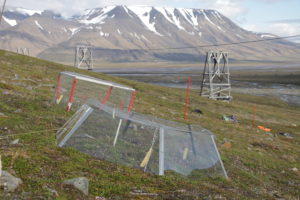Now that I am back in Iceland and have had some time to reflect on my stay in Svalbard during the PFTC4 course, I realised how incredibly valuable this experience was to me. Going into this course I had high expectations and was set on improving my knowledge in trait based ecology, learn new methods and meet ambitious researchers. All of these expectations were met and I couldn’t be happier with the outcome of the course. Being part of such an intense and hard working group of people definitely inspired me to pursue a more research in the future. For me, concerns about environmental issues our generations are facing in light of climate change, play a huge role in why I pursued a path in ecological research. Being involved in great discussions about the importance of scientific communication and how to bridge the gap between scientists and the public with all of you was really enlightening and was perhaps something that I didn’t anticipate but was for me a great add on to my overall experience.
After surveying locals and tourists in Svalbard about their perceptions of climate change I learned that most people, although not everyone, accept that the planet is warming and that it is largely caused by human activities. This was not surprising to me and was what I expected before I went out and asked people about this issue. The reason for that is mainly because in Svalbard, climate warming is becoming an obvious phenomenon in everyday life and is actually affecting people that live there directly. In Iceland this is somewhat different since the direct effects of climate warming are maybe not as obvious as in the high Arctic but in spite of that, I think that the public perceptions of climate change is comparable. To my knowledge, most people here in Iceland accept the fact that the planet is warming and that it is largely human caused.
Surveying people in Longyearbyen was interesting and something I have never done before. I feel the information that we collected was valuable and I thought it was especially interesting to compare the results from Svalbard with the results from Peru. Another interesting aspect of this survey was that it actually caught the interest of journalists and the results will hopefully be published in an article in the local newspaper in Longyearbyen. The town of Longyearbyen is small town and in addition many people that stay only live there for a short period of time. I therefore found it hard to find locals to talk to and convince to take the survey. Getting the tourists attention was much easier in my experience. If I were to do this again, I would like to perhaps shorten the survey a little bit because I felt as people were not invested in every single answer because they were often in a hurry. In that way, we might have been able to collect more surveys than we managed. I was still impressed with how many surveys we actually managed to collect and many people were genuinely interested in the topic and we had many interesting dialogs with both some locals and tourists as well.
Thank you all for this great experience, awesome discussion and collaboration. Really hope to work with you somewhere, someday soon again.
Best
Kata
